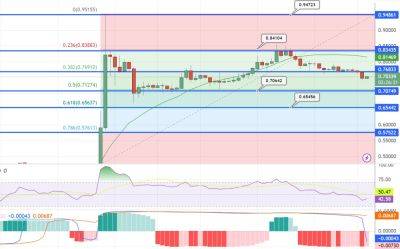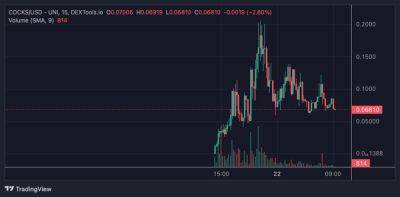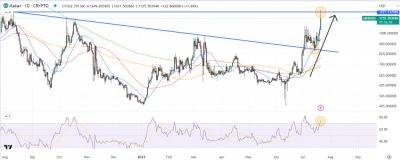Bitcoin (BTC) Slides Back Below $30K, But Should Pump if These Correlations Re-emerge
Bitcoin (BTC), the cryptocurrency that powers the world’s largest decentralized cryptographically secured network in the world, fell around 1.5% on Tuesday to the $29,700 area and briefly hit fresh one-month lows around $29,500 earlier in the day.
The cryptocurrency’s momentum has continued to fade since it hit a fresh yearly high last week near $31,800, boosted at the time by optimism regarding 1) recent spot bitcoin exchange-traded fund (ETF) filings from Wall Street heavyweights and 2) a US judge’s ruling on XRP that markets deemed as crypto bullish.
BTC’s latest slide has seen it dip around 2.5% below its 21-Day Moving Average.
If the cryptocurrency also loses its grip on support in the mid-$29,000s from late June/early July, a dip to support in the mid-$28,000s is likely.
While the short-term technical outlook for bitcoin is precarious, macro tailwinds could come to BTC’s aide.
Indeed, if a few of bitcoin’s historically strong correlations, such as to the US stock market and the US dollar, return, then bitcoin could be set up for a pump.
In the last three or so years, bitcoin has typically had a strong positive correlation to the US stock market.
That could be because, while bitcoin has emerged as a mainstream asset in recent years, most investors still viewed it, and traded it as a “risk assets” (much like how they trade stocks).
Bitcoin also seems (or seemed) to have that same positive correlation with easing liquidity conditions as the stock market.
Indeed, in 2020/2021, bitcoin pumped in tandem with the stock market on low interest rates and massive QE from the world’s major central banks, before then pulling back sharply in tandem with stocks in 2022 as those same central banks started rapidly lifting interest rates due
Read more on cryptonews.com






















